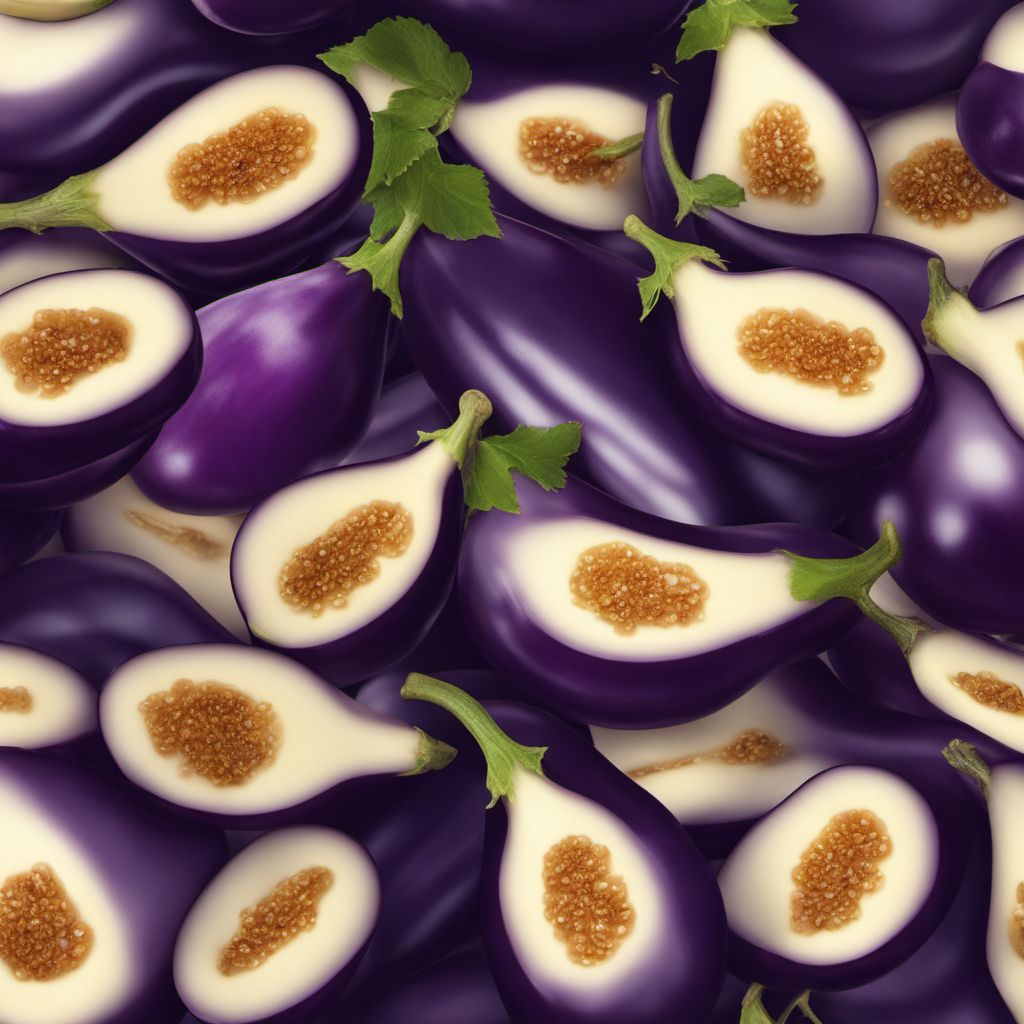
Ingredient
Aubergines and similar-
The Versatile Eggplant
Aubergines have a smooth, glossy skin and a creamy flesh. They have a mild, slightly bitter taste and a spongy texture when cooked. Aubergines are commonly used in Mediterranean and Middle Eastern cuisines, where they are roasted, grilled, or used in stews and dips like baba ganoush. They come in various shapes and colors, including the classic deep purple, as well as white, green, and striped varieties.
Origins and history
Aubergines are believed to have originated in India and were introduced to the Mediterranean region by Arab traders. They have been cultivated for thousands of years and have become a staple in Mediterranean and Middle Eastern cuisines. Aubergines gained popularity in Europe during the Renaissance and have since spread to various parts of the world. Today, they are enjoyed in a wide range of dishes across different cultures.
Nutritional information
Aubergines are low in calories and fat, making them a healthy addition to meals. They are a good source of dietary fiber, vitamins, and minerals such as potassium and manganese. A 1-cup (82g) serving of cooked aubergine provides approximately 20 calories.
Allergens
May contain allergens for individuals with nightshade vegetable allergies.
How to select
When selecting aubergines, choose ones that are firm and heavy for their size. The skin should be smooth and shiny, without any blemishes or soft spots. Avoid aubergines that feel too light or have wrinkled skin, as these may indicate age or poor quality. Additionally, smaller aubergines tend to have fewer seeds and a milder flavor.
Storage recommendations
To store aubergines, place them in a cool, dry place or in the refrigerator's crisper drawer. They should be used within 5-7 days of purchase for the best quality. Avoid storing aubergines near ethylene-producing fruits, as they can accelerate spoilage. If cut, wrap the exposed flesh tightly in plastic wrap and refrigerate for up to 2 days.
How to produce
Aubergines can be grown in home gardens or containers, provided they receive ample sunlight and warm temperatures. They require well-drained soil and regular watering. Start by planting seeds or transplanting seedlings, and ensure they are properly supported as they grow. Harvest aubergines when they reach a mature size and have a glossy skin.
Preparation tips
Before cooking aubergines, they should be washed, and the stem and calyx should be removed. Depending on the recipe, aubergines can be sliced, cubed, or halved. To reduce bitterness, some recipes call for salting and draining the aubergine before cooking. Aubergines can be roasted, grilled, sautéed, or used in stews, curries, or dips like baba ganoush.
Substitutions
Zucchini, yellow squash, or bell peppers can be used as substitutes for aubergines in certain dishes. While they may not provide the exact same flavor and texture, they can still add a similar vegetable element to the dish.
Culinary uses
Aubergines are commonly used in Mediterranean and Middle Eastern cuisines. They are often roasted, grilled, or used in dishes like moussaka, ratatouille, or baba ganoush. Aubergines can also be stuffed, fried, or used as a meat substitute in vegetarian dishes.
Availability
Aubergines are commonly available in most grocery stores and supermarkets, especially in regions with a strong Mediterranean culinary influence. They are also cultivated in many countries around the world, including India, China, Turkey, and Italy.
More ingredients from this category

Pepinos
"The Refreshing Delight: Unveiling the Secrets of Pepinos"

Ethiopian eggplants
Exotic Gems: Discovering Ethiopian Eggplants

Kangaroo apples
The Exotic Delight from Down Under

Thorn apples
The Enigmatic Thorn Apples

Turkey berries
The Hidden Gem of the Culinary World: Turkey Berries Unveiled

Antroewas
The Enigmatic Delight: Unveiling the Secrets of Antroewas

Aubergines
The Versatile Eggplant